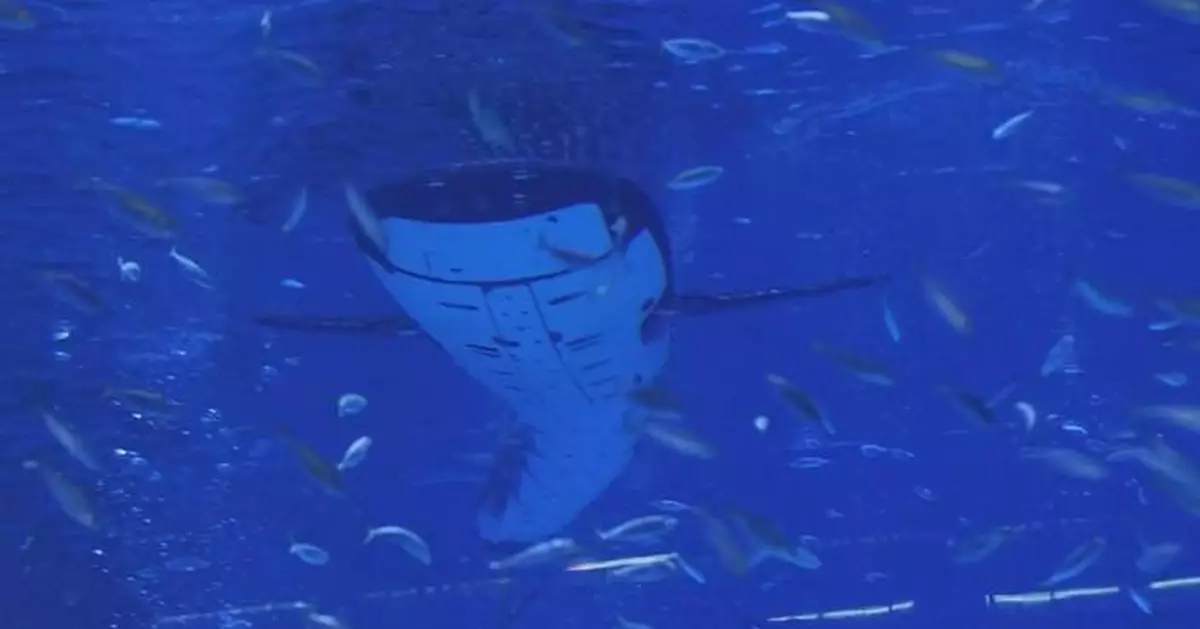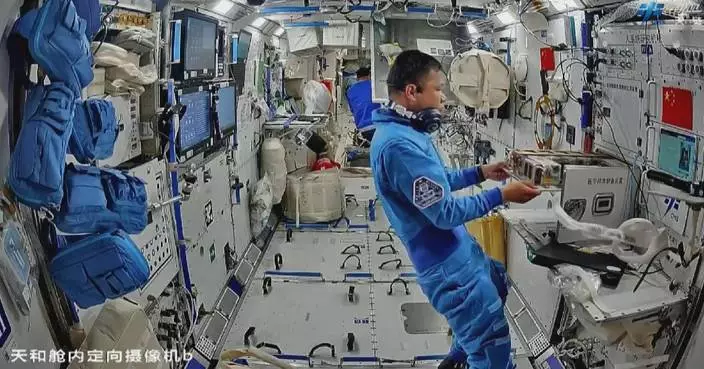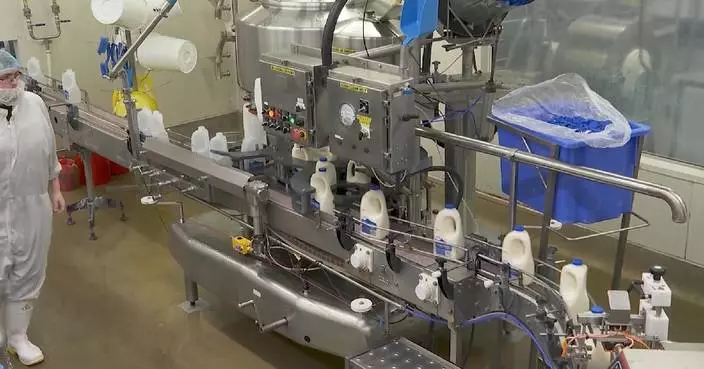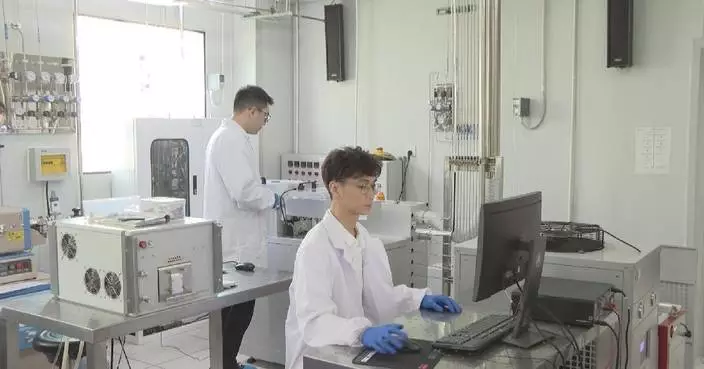A Shenyang-based company which produced the world's first intelligent robotic whale shark has been dedicated to integrating space technology into the intelligent equipment industry and promoting the modern marine sector.
Developed by Shenyang Aerospace Xinguang Group under the Third Academy of China Aerospace Science and Industry Corporation Limited, the bionic whale shark is nearly five meters long and weighs 350 kilograms. It can swim, turn, float, dive, and open and close mouth in the water like a real shark.
"This is the largest bionic fish we have studied so far. The whale shark has seven actuated joints, and each joint requires computing, communication, and sensing, which is also our key technology," said Gao Chao, designer of Shenyang Aerospace Xinguang Group's Underwater Propulsion Technology Research Office.
This bionic whale shark has technologies such as wireless remote control, program-controlled swimming, and multi-joint bionic propulsion. It can swim at a maximum speed of 0.7 meters per second, and dive 20 meters deep.
Equipped with optical cameras, different sensors, sonar and BeiDou positioning systems, it can be used to monitor water quality, survey underwater terrain, and serve other special purposes.
"For example, when this robot performs underwater, or carries out a task, it will inevitably encounter various obstacles on its route. How to fuse information obtained by multiple sensors is actually a technical difficulty. It can be understood that the brain of a whale shark is a computer. A mass of data must be screened and extracted synchronously, and then mutually corrected and verified before the truly effective data can be quickly extracted for our bionic whale shark to identify the surrounding environment," said Fang Xuelin, assistant director of the Underwater Propulsion Technology Research Office.
Compared to traditional propeller-propelled underwater robots, bionic whale sharks are superior in terms of environmental protection, efficiency, and mobility. With battery and driving gear installed in a closed body, it will not pollute the water and not be easily entangled by obstacles such as aquatic plants and will not cause harm to real fish.
Up to now, the company has developed various models of bionic products such as Yangtze finless porpoises, killer whales and dolphins and will continue to promote integration of marine bionic technology and intelligent systems.
Underwater robots are an important carrier for human beings to understand, explore, develop and utilize the ocean, and are also the core force to promote the rapid development of the modern marine industry. With the development of materials science, control science and artificial intelligence, underwater bionic robots will play a greater role as a new type of marine equipment.
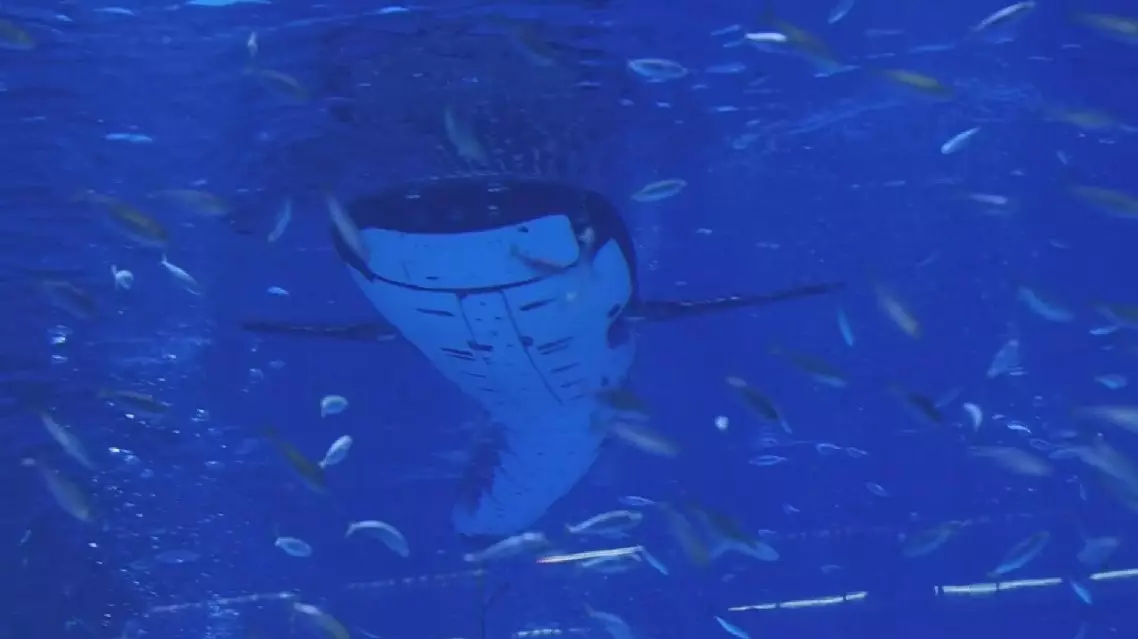
World's first intelligent robotic whale shark developer explores modern marine sector


